Modernist architectural education was established in Siberia in the first third of the 20th century, starting with the opening of the construction engineering department of the Tomsk Technology Institute (TTI-STI). In the 1920s, in parallel with the Tomsk STI, another arts education center, the Khudprom college, was founded in Omsk. Khudprom stood for the industrial arts college founded under Narkompros (People’s Department of Education). After 1930, the graduates and teachers of Khudprom and STI came to work at Novosibirsk’s SIBSTRIN, thus forming the regional higher school of architecture.
Khudprom introduced the educational programmes of VKHUTEMAS in Siberia. Having graduated from the industrial arts college of Khudprom, Petr Rusinov immediately started to teach there, and in 1926, he formed his course “The Foundations of Architecture”. The course was based on the programme of rationalist architects developed by N.V. Dokuchaev, who was the founder, theoretician, and promoter of the ideas of the ASNOVA group: “new rhythms” and new shapes consisted in “combining the equal”.
Unlike the ideas of constructivism which captured the Tomsk STI, including Nikolay Kuzmin, the Omsk Khudprom from the very beginning followed the rationalist course of VKHUTEMAS, in which architecture was first of all perceived as art. The main tasks of architecture, in the understanding of Khhudprom, were the issues of form, structure, and space. Under the guidance of Petr Rusinov, the students worked on topics surrounding artistic expression: they strove to achieve clarity of visual perception by investigating its main characteristics; unity and harmony of the elements of a complex shape, tension as the due degree of the organising force of impact of the shape upon the viewer; and dynamics of the shape. Indeed, the studies of Petr Rusinov’s students show their orientation towards earlier “monumental propaganda” of the period of revolutionary symbolism.
-
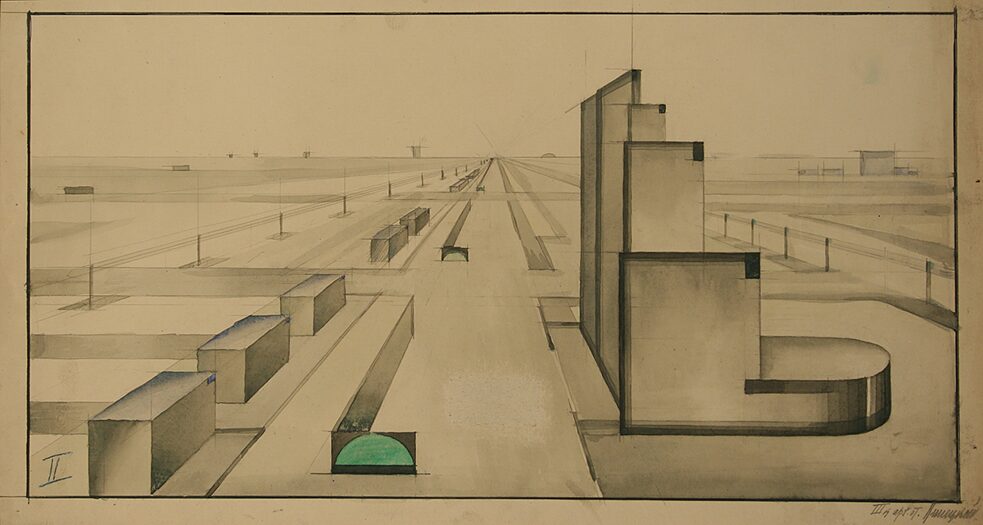 © Mikhail Vrubel Arts Museum
© Mikhail Vrubel Arts Museum
A street perspective. Architectural graphics. Omsk. A.V. Linetsky // The 1920s
-
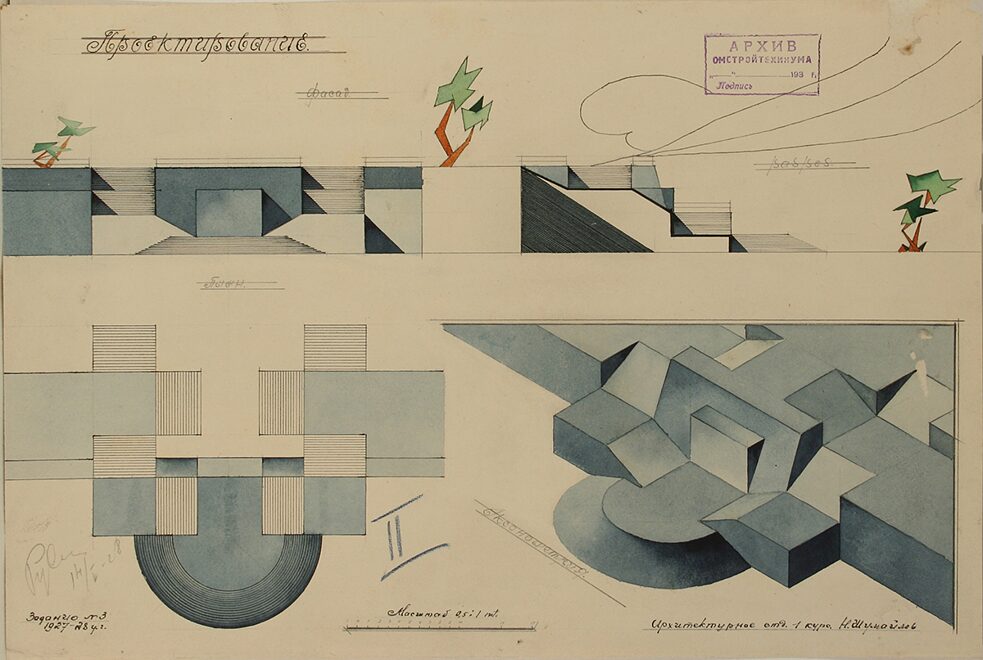 © Mikhail Vrubel Arts Museum
© Mikhail Vrubel Arts Museum
A staircase. The design. The blueprint, facade, cross section, axonometry. Omsk. Student N.V. Shumailov // 1928
-
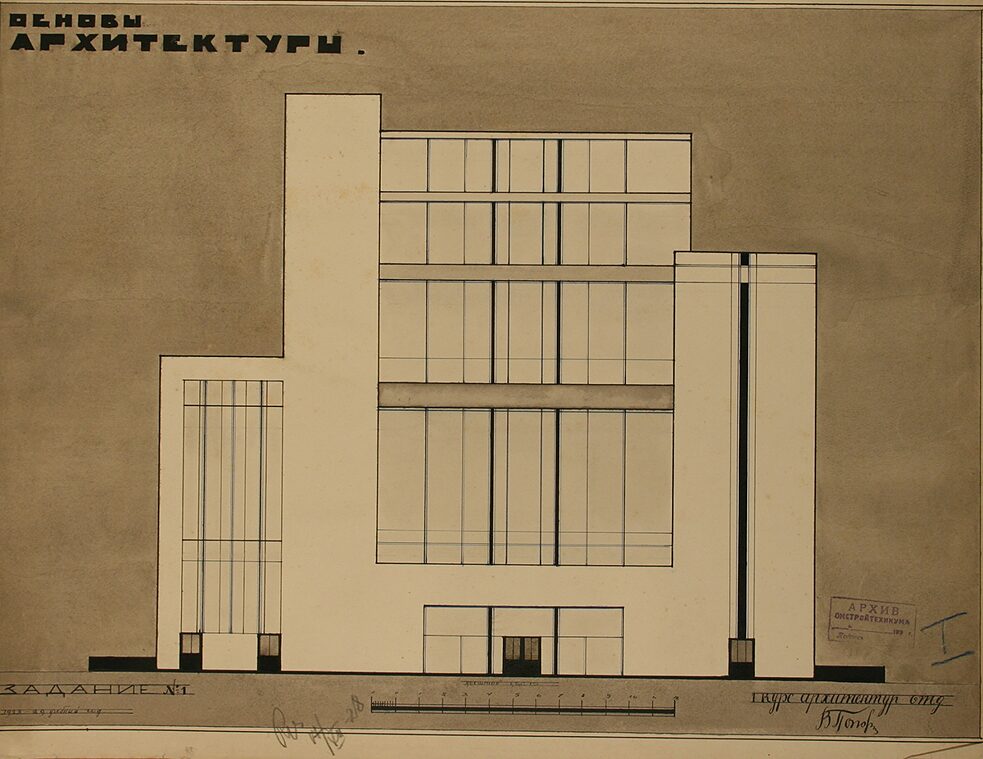 © Mikhail Vrubel Arts Museum
© Mikhail Vrubel Arts Museum
A building facade. The foundations of architecture. Omsk. Student V. Popov // 1928-1929
-
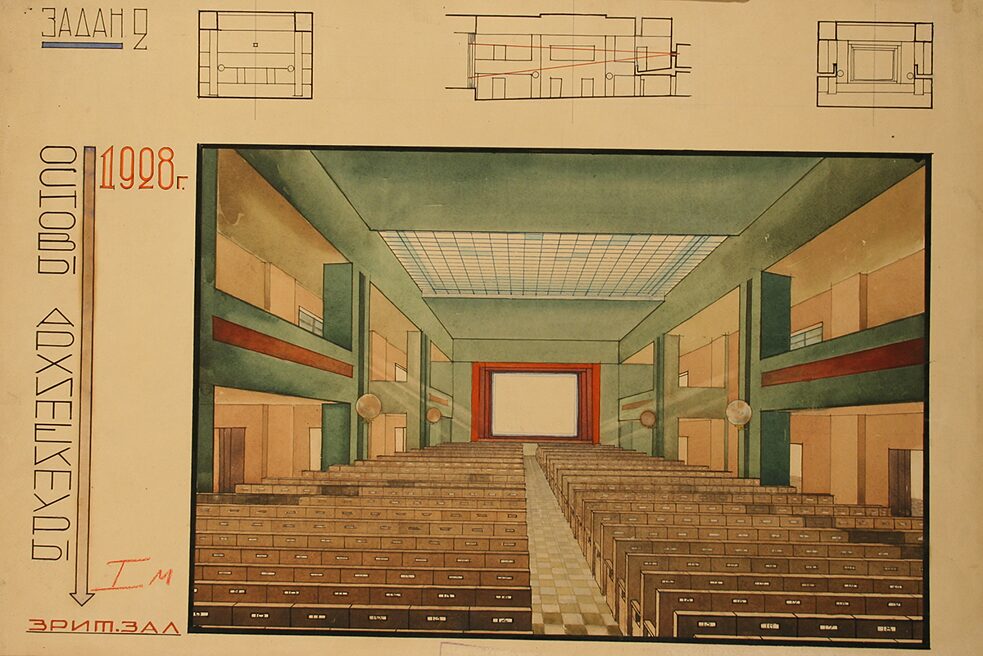 © Mikhail Vrubel Arts Museum
© Mikhail Vrubel Arts Museum
The interior of an auditorium. The foundations of architecture // 1928
-
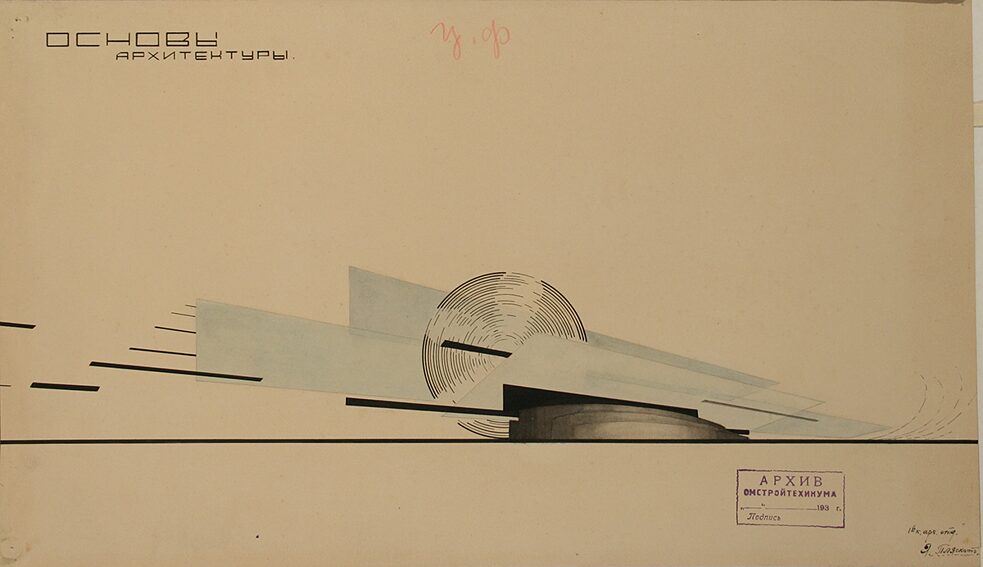 © Mikhail Vrubel Arts Museum
© Mikhail Vrubel Arts Museum
An architectural composition. The foundations of architecture. Student O. Plyaskoto // The 1920s
-
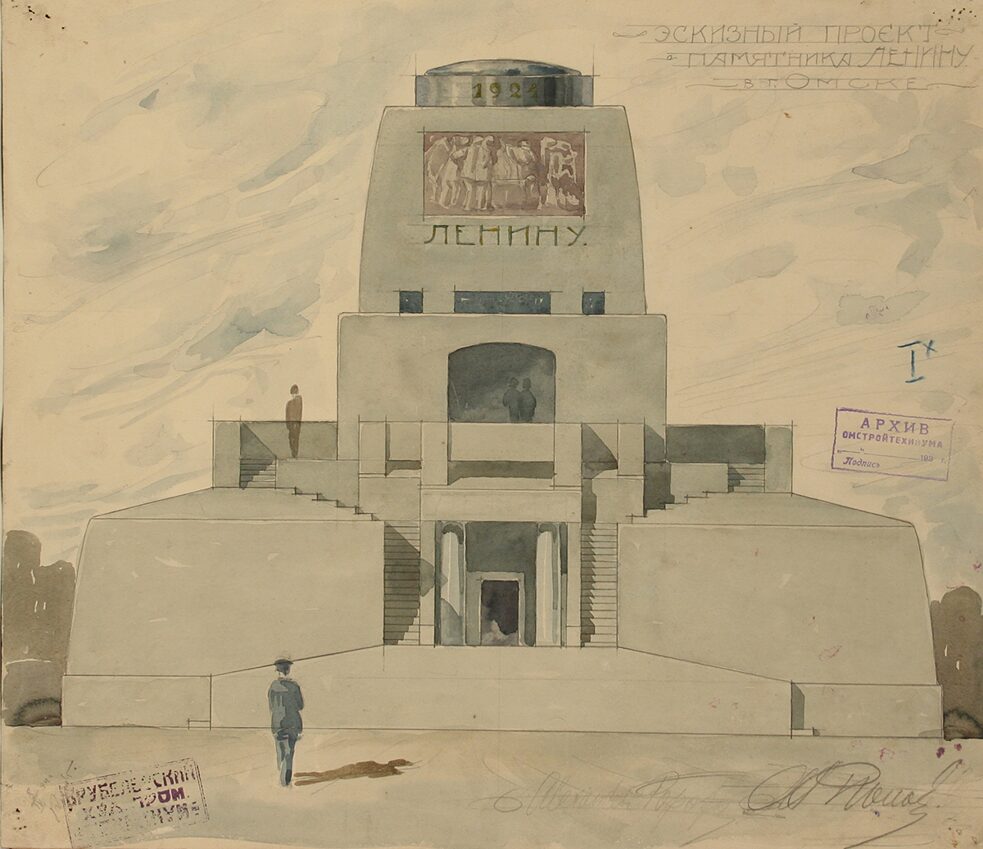 © Mikhail Vrubel Arts Museum
© Mikhail Vrubel Arts Museum
A monument to Lenin in Omsk. A blueprint sketch. The main facade. Designed by A.I. Popov // 1924
-
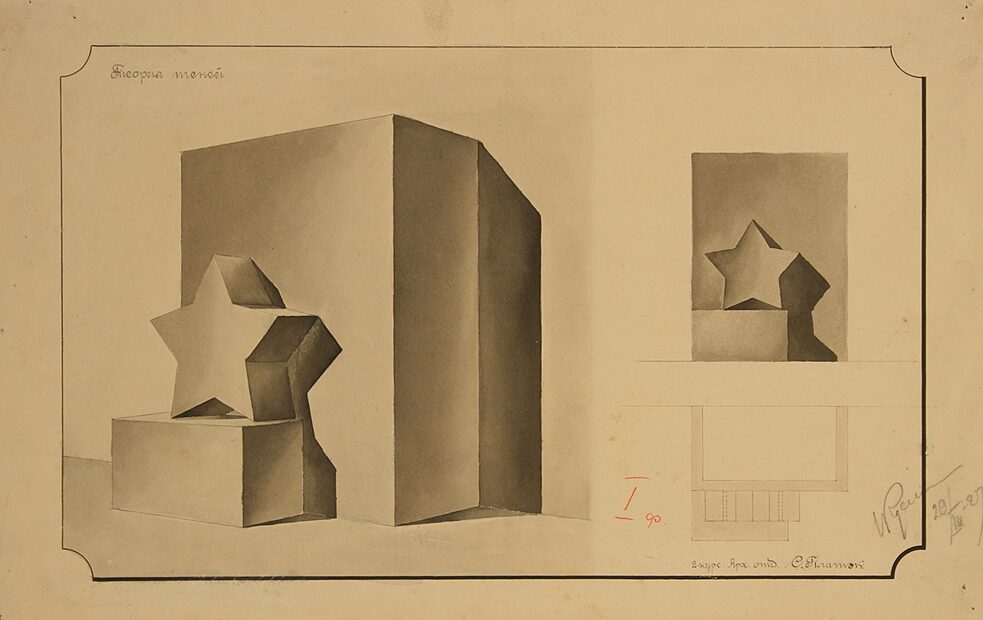 © Mikhail Vrubel Arts Museum
© Mikhail Vrubel Arts Museum
A composition, the theory of shadows. Omsk. Drawn by S.A. Platek // 1927
-
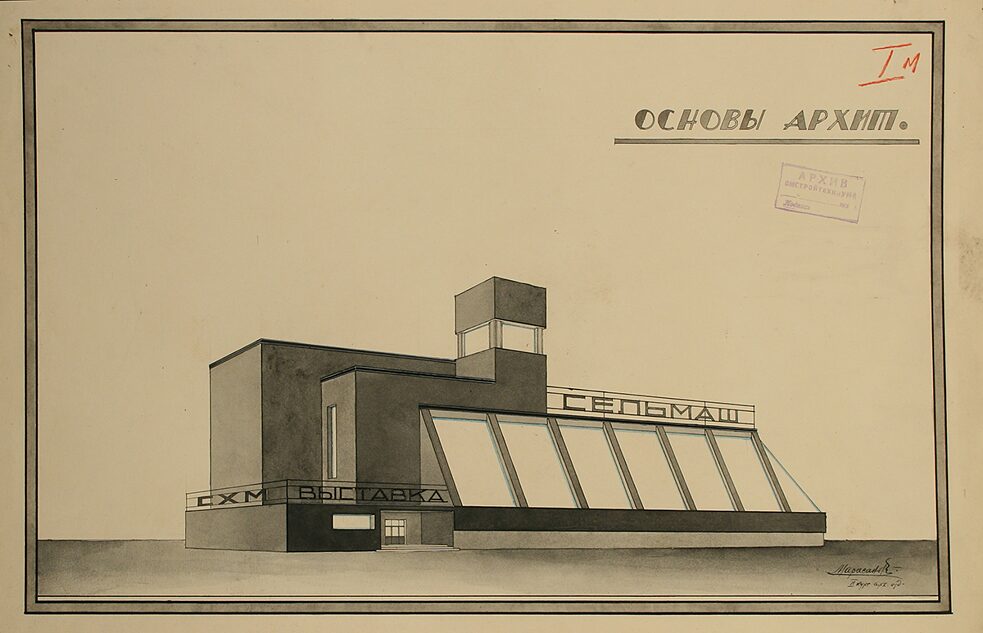 © Mikhail Vrubel Arts Museum
© Mikhail Vrubel Arts Museum
The Selmash exhibition pavilion. A perspective. The foundations of architecture. Omsk. Designed by I.I. Marasanov // 1926-1927
-
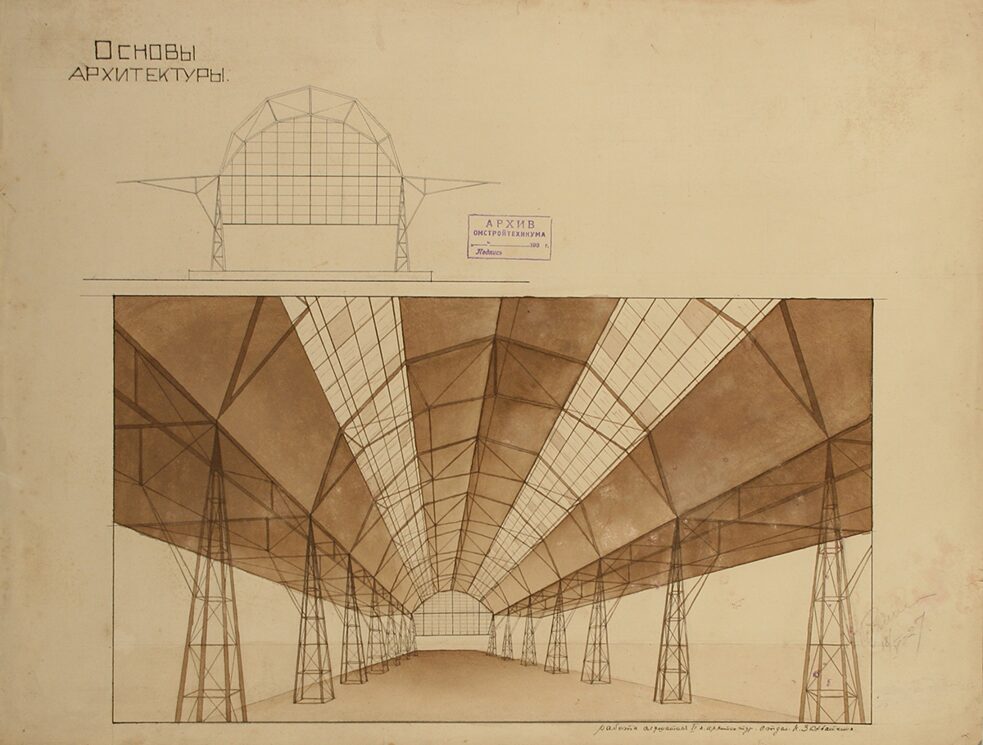 © Mikhail Vrubel Arts Museum
© Mikhail Vrubel Arts Museum
A floor structure. The foundations of architecture. Omsk. Designed by K.G. Zakhvatkin // 1927
-
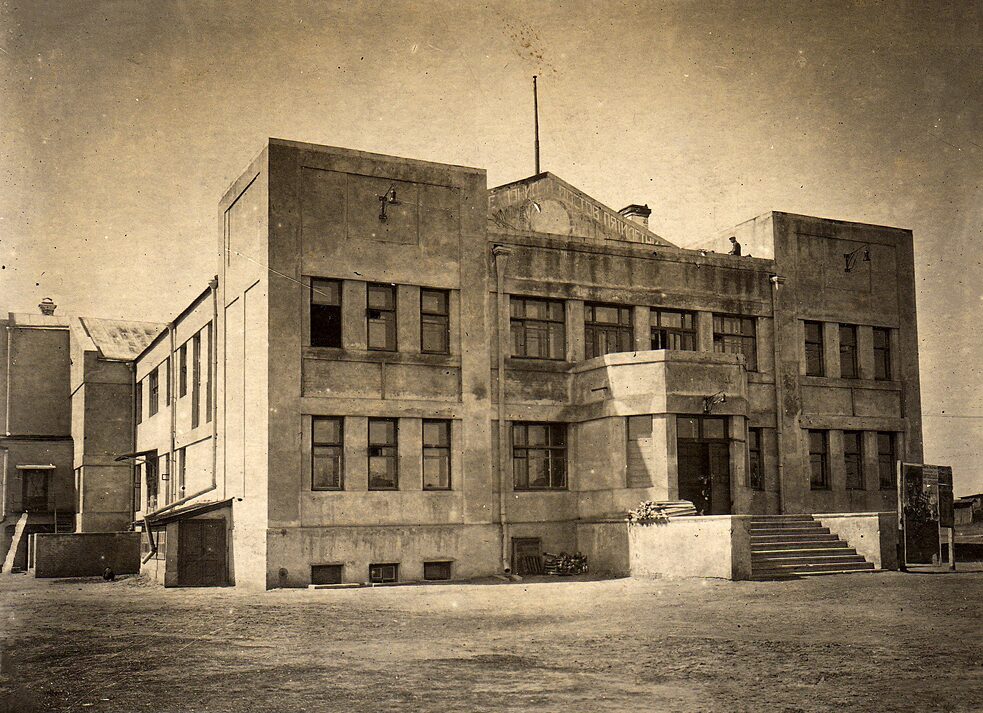 © E.O. Freidin’s archives
© E.O. Freidin’s archives
Metallist, the workers’ house of culture of Sibmetaltrest. Designed under the motto “Hammer”. Omsk. Architect P.I. Rusinov // 1927-1928
-
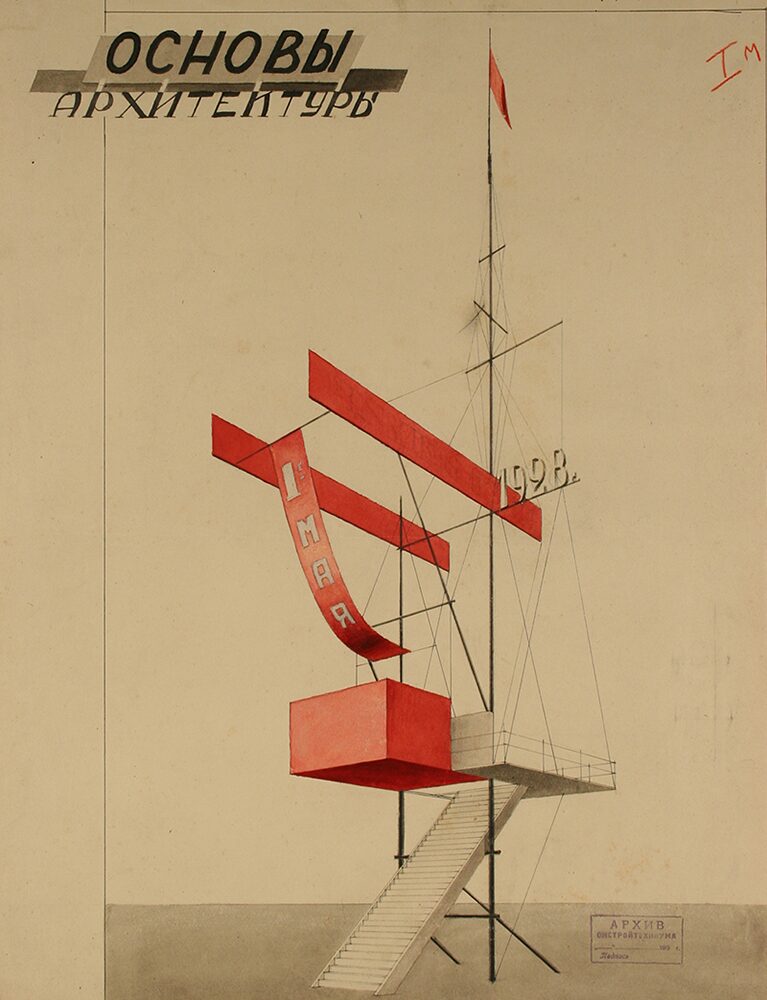 © Mikhail Vrubel Arts Museum
© Mikhail Vrubel Arts Museum
A festive rostrum. The foundations of architecture. Omsk. The designer is unknown // 1928
-
 © Mikhail Vrubel Arts Museum
© Mikhail Vrubel Arts Museum
A street perspective. Architectural graphics. Omsk. A.V. Linetsky // The 1920s
-
 © Mikhail Vrubel Arts Museum
© Mikhail Vrubel Arts Museum
A staircase. The design. The blueprint, facade, cross section, axonometry. Omsk. Student N.V. Shumailov // 1928
- 1
- 2
- 3
- 4
- 5
- 6
- 7
- 8
- 9
- 10
- 11
In August 1929, the Omsk Modern Architects group was formed in Khudprom, and rationalist trends were replaced with the constructivism of the OSA group. Three architects: Sergey Ignatovich, Alexander Ogorodnikov, and Petr Rusinov were members of the initial group. They implemented a number of architectural projects for residential and public buildings in Omsk, such as the residential blocks of Sibmetaltrest, the Metallist House of Culture, and the design of the watchtower of Omsk’s third fire unit. In 1930, Khudprom was dismissed, with some of its divisions remaining in Omsk, and a large part of its graduates and teachers moving to Novosibirsk. There they successfully worked in various local design organisations and taught in SIBSTRIN, laying down the foundations of modernist education.











